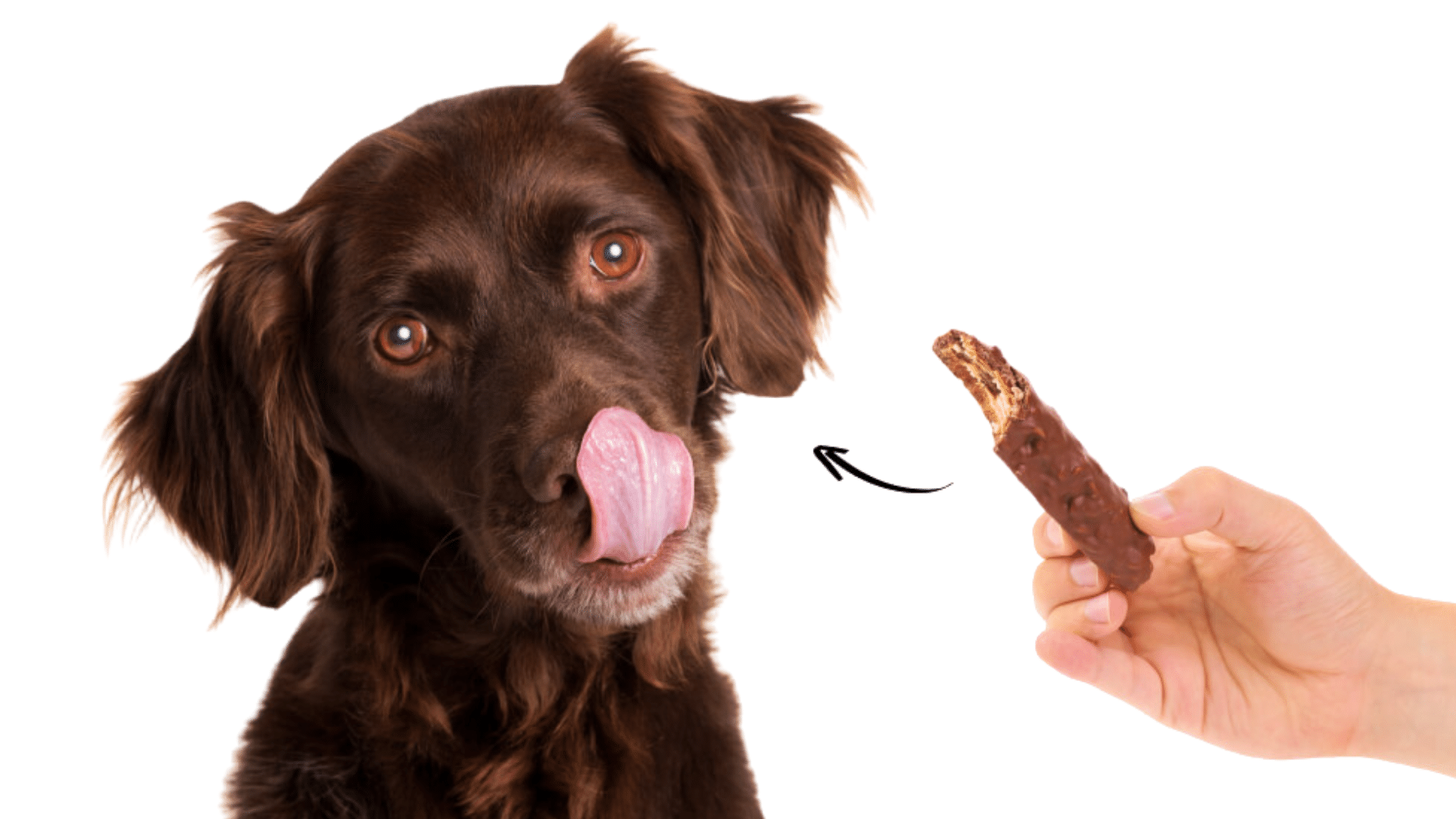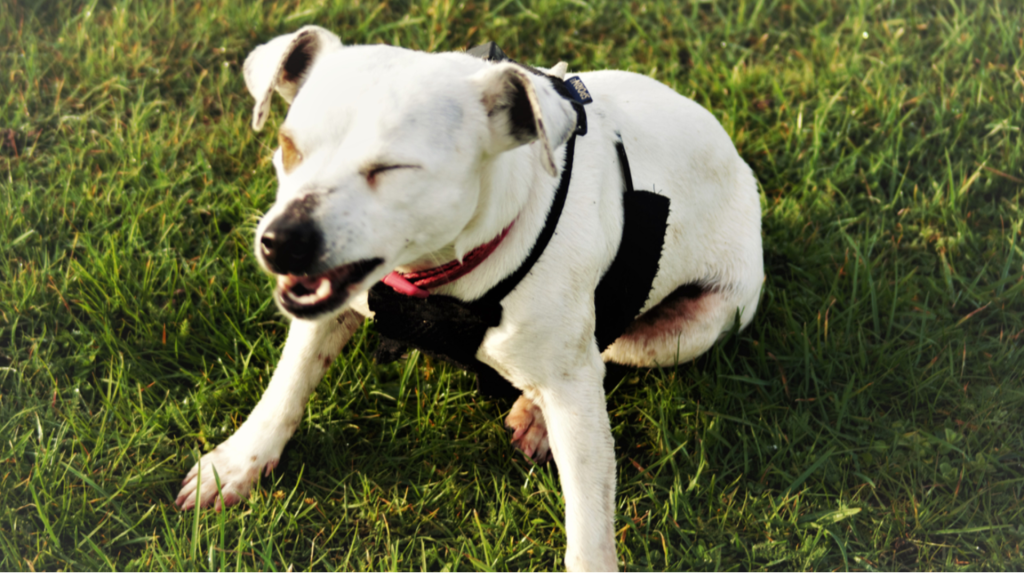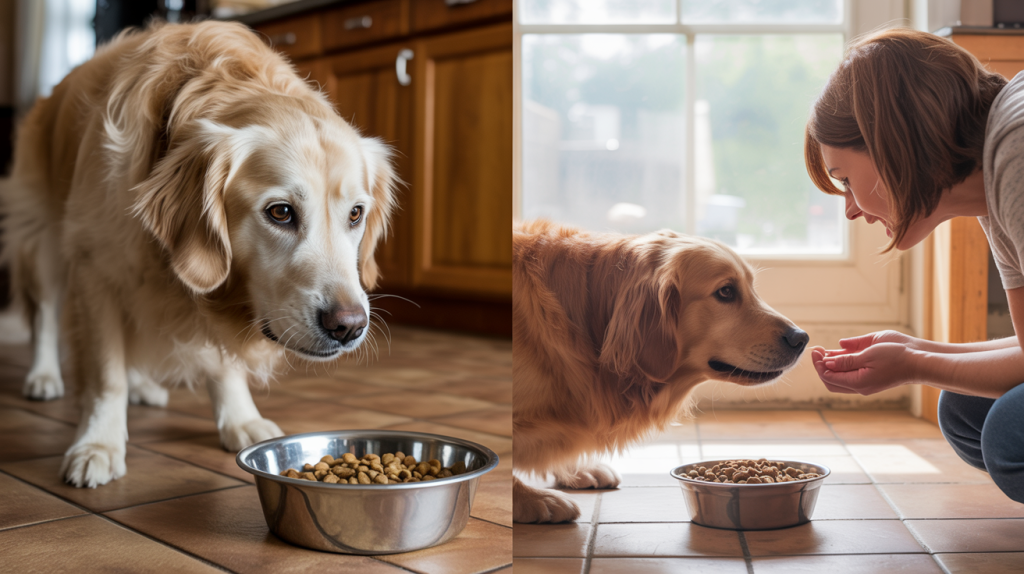Every dog owner has experienced that heart-stopping moment when their furry friend gets into something they shouldn’t have.
When it comes to chocolate, this isn’t just about a mess to clean up; it’s a genuine medical emergency that can threaten a dog’s life.
Many pet parents don’t realize that even small amounts of certain chocolates can cause serious poisoning in dogs.
This blog will walk readers through the symptoms of chocolate poisoning in dogs, from mild symptoms like restlessness to severe reactions requiring immediate veterinary care.
Why is Chocolate Toxic to Dogs?
Chocolate contains two compounds that make it dangerous for dogs: theobromine and caffeine.
While humans can metabolize these substances quickly, dogs process them much more slowly, allowing toxins to build up in their system and cause poisoning.
Theobromine is the primary culprit, and it’s found in higher concentrations in darker chocolates. A dog’s body can take 17-20 hours to eliminate half the theobromine they’ve consumed, compared to just 2-3 hours in humans.
The darker the chocolate, the more dangerous it becomes. Baking chocolate and dark chocolate pose the greatest risk, while milk chocolate contains lower levels but can still cause problems in smaller dogs
How Much Chocolate Is Poisonous to A Dog?
The amount of chocolate that’s toxic to a dog depends on the dog’s size and the type of chocolate consumed. The following is a table for your better understanding.
| Chocolate Type | Toxic for a 10 lb Dog | Toxic for a 20 lb Dog | Toxic for a 30 lb Dog | Dose Considered Dangerous |
|---|---|---|---|---|
| Cocoa/Baking Chocolate | 0.5 oz | 1 oz | 1.5 oz | 0.1 oz/lb body weight |
| Dark Chocolate | 1.5 oz | 3 oz | 4.5 oz | 0.13 oz/lb body weight |
| Milk Chocolate | 3.5 oz | 7 oz | 10.5 oz | 0.7 oz/lb body weight |
| White Chocolate | Not toxic | Not toxic | Not toxic | Trace theobromine, not typically toxic |
Common Symptoms of Chocolate Poisoning in Dogs
When chocolate poisoning occurs, symptoms typically appear within 6-12 hours of ingestion. The severity and onset depend on how much chocolate was consumed and the dog’s size, but owners should watch for these warning signs.
The following are symptoms of chocolate poisoning in dogs.
1. Vomiting and Diarrhea
These are often the first signs of chocolate toxicity and can appear within hours of consumption. The vomiting may be forceful and contain chocolate remnants, while diarrhea can be watery or bloody.
Both symptoms indicate the dog’s body is trying to expel the toxic substances, but also lead to dehydration.
2. Increased Heart Rate and Panting
Theobromine acts as a stimulant, causing the heart to race abnormally fast. Dogs may pant excessively even when resting, and their breathing becomes labored.
Pet owners might notice their dog’s chest moving rapidly or feel an unusually fast pulse when touching their chest or neck area.
3. Restlessness and Hyperactivity
Chocolate poisoning creates a caffeine-like effect that makes dogs extremely agitated and unable to settle down. They may pace constantly, seem unable to get comfortable, or display unusual energy levels.
This restlessness often comes with whining, excessive barking, or other behavioral changes that seem out of character.
4. Excessive Thirst and Urination
The toxic compounds in chocolate affect kidney function and cause increased water consumption. Dogs will drink much more than normal and need to urinate frequently as their bodies attempt to flush out the toxins.
This combination can quickly lead to accidents in house-trained dogs and contribute to dehydration.
5. Tremors and Seizures
In severe cases, the neurological effects become apparent through muscle tremors that start mild but can progress to full seizures.
These tremors often begin in the legs and spread throughout the body. Seizures represent a medical emergency requiring immediate veterinary intervention, as they can cause permanent brain damage.
6. Loss of Coordination
Dogs may stumble, appear drunk, or have difficulty walking in straight lines as the toxins affect their nervous system. This lack of coordination, called ataxia, makes simple movements challenging.
Pet owners might notice their dog bumping into furniture, falling over, or struggling to navigate stairs they normally handle easily.
7. Elevated Body Temperature
Chocolate poisoning can cause hyperthermia, where the dog’s body temperature rises dangerously high above the normal 101-102°F range.
This fever-like condition is particularly dangerous because it can lead to organ damage. Dogs may feel hot to the touch and seek out cool surfaces like tile floors or shaded areas.
8. Collapse and Coma
In the most severe cases, dogs may collapse from exhaustion, dehydration, or organ failure. This represents the final stages of chocolate toxicity, where the body’s systems begin shutting down.
A coma can follow a collapse, and without immediate emergency treatment, this progression can become fatal within hours of onset
What to Do if Your Dog Eats Chocolate
If a dog eats chocolate, time is critical, and immediate action can make the difference between recovery and tragedy.
First, remove any remaining chocolate from the area to prevent further consumption, then gather important information: what type of chocolate, how much was eaten, and when it happened.
Contact a veterinarian or pet poison hotline immediately, even if the dog seems fine. Don’t wait for symptoms to appear, as they can take hours to develop while toxins continue building up.
The vet may recommend inducing vomiting if the chocolate was consumed recently, but never attempt this without professional guidance.
Keep the dog calm and monitor for symptoms like vomiting, restlessness, or rapid breathing. Transport to the emergency clinic if advised, bringing chocolate packaging to help determine toxicity levels and guide treatment decisions
Is White Chocolate Toxic to Dogs?
White chocolate poses minimal toxicity risk to dogs because it contains virtually no theobromine or caffeine, the compounds that make other chocolates dangerous.
Made primarily from cocoa butter, sugar, and milk solids, white chocolate lacks the cocoa solids where toxic substances concentrate.
However, this doesn’t mean white chocolate is safe for dogs. The high sugar and fat content can still cause digestive upset, leading to vomiting and diarrhea.
Large quantities might trigger pancreatitis, a serious inflammatory condition. Additionally, some white chocolate products contain artificial sweeteners like xylitol, which is extremely toxic to dogs and can cause liver failure.
While white chocolate won’t cause chocolate poisoning, it’s still best kept away from dogs entirely.
The Bottom Line
Chocolate poisoning in dogs is entirely preventable, but when it happens, quick recognition of symptoms can save lives.
Dog owners should keep all chocolate products securely stored and educate family members about the dangers.
Check for symptoms of chocolate poisoning in dogs, and when in doubt, always contact a veterinarian; they’d rather receive an unnecessary call than lose a patient to delayed treatment.
Remember, dogs don’t understand why chocolate is dangerous, so it’s up to their humans to protect them from this sweet but potentially deadly temptation.









